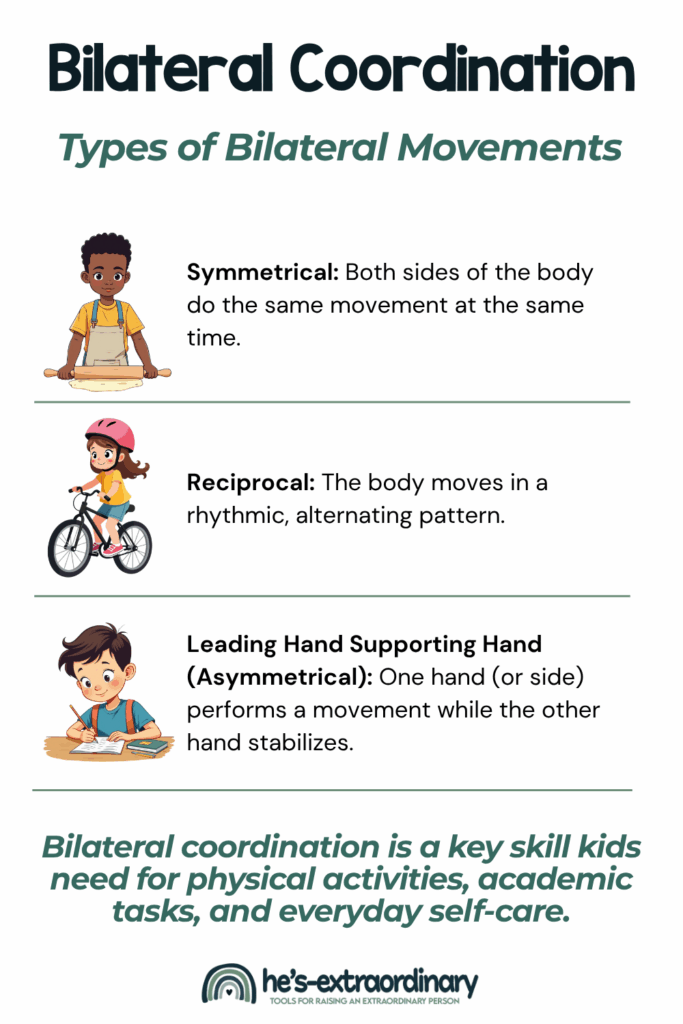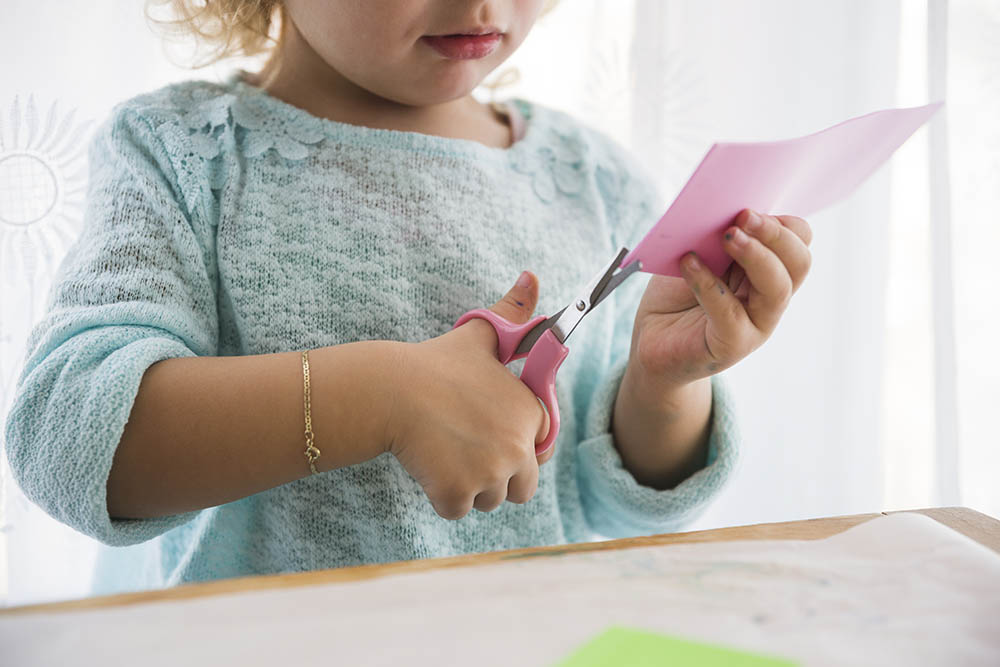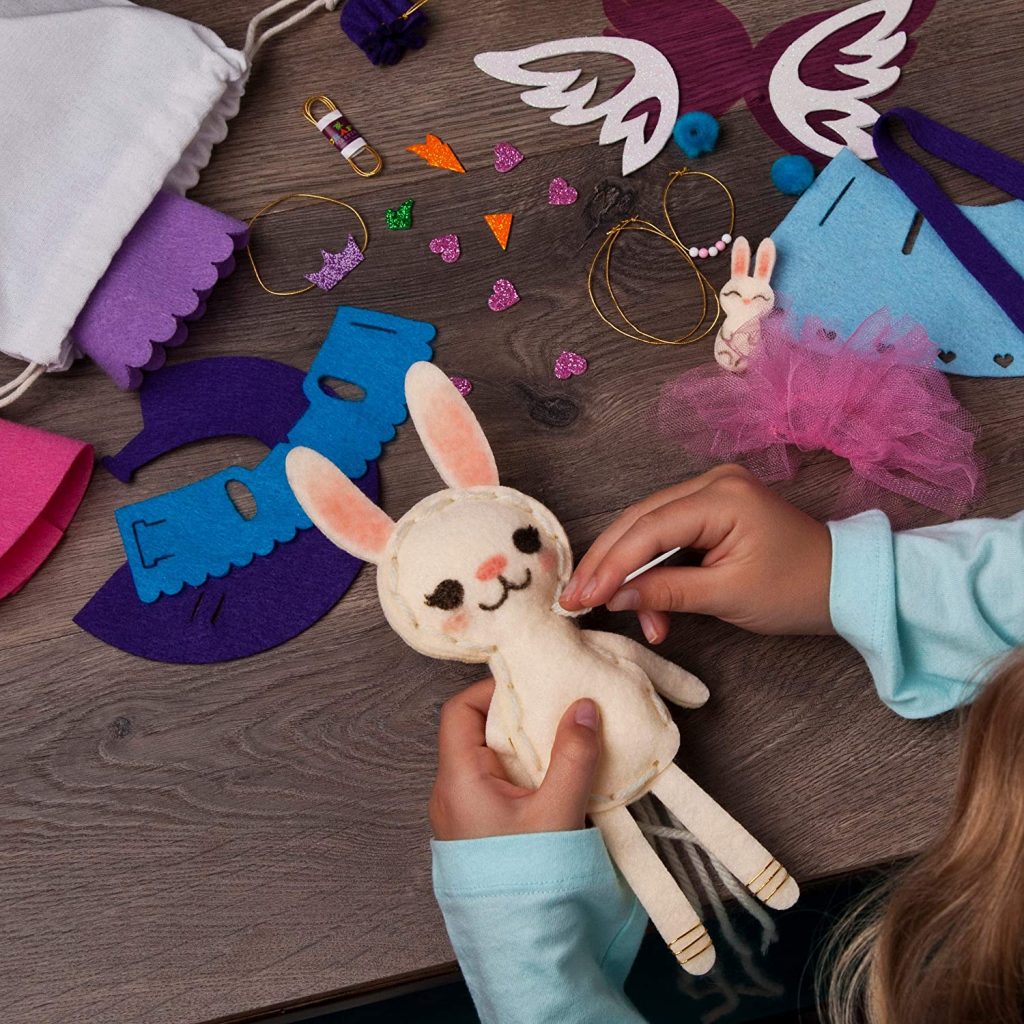Bilateral Coordination – What It Is, How to Improve It
What’s inside this article: An overview of bilateral coordination, types of bilateral movements, signs your child may need more support in this area, and lastly, play-based strategies to improve bilateral coordination.
Disclaimer: This post contains affiliate links
What is Bilateral Coordination?
Bilateral Coordination is the ability to use both sides of your body in an organized and coordinated fashion. We use this skill constantly…daily activities at home, in school, and throughout childhood (and or whole lives) require us to use bilateral coordination.
Developing bilateral coordination is important.
The fact that I have bilateral coordination is the reason why I can sit here and write this article, with both my hands on the keyboard, and type these words as they come to my mind.
That’s something a lot of us might take for granted, because we don’t have to think about it. But, for some kids, it takes extra support, practice, and patience to build bilateral coordination.
Bilateral Coordination Challenges – What it Looks Like
Every child is different, and motor skill development isn’t always linear.
But, if your child avoids or struggles with certain tasks, particularly ones that require movements on both sides of the body, they might need extra support building coordination.
Here are some things you may notice :
- Difficulty coordinating both sides of the body smoothly (e.g., jumping jacks, riding a bicycle)
- Difficulty doing tasks that require both hands to work together (e.g., tying shoelaces, cutting with scissors). You might notice they try to do these tasks with one hand instead.
- Requires extra support to build fine motor skills
- Switching hands frequently instead of establishing a preferred dominant hand.
- Trouble with tasks that require sequential movements (e.g., climbing stairs, skipping, clapping games)
- A general tendency to avoid sports or activities involving coordination, like catching a ball or swimming
- Difficulty or avoidance of rhythmical activities, such as dancing or playing musical instruments
- Easily frustrated or avoids tasks like fastening buttons or zipping zippers.
- Challenges with the vestibular system because bilateral coordination is a component of sensory integration within the vestibular system.
- Challenges with spatial awareness, leading to clumsiness or frequent bumping into objects
- Struggles with tasks that require crossing the midline of the body, such as drawing a line across a page without switching hands
- May either avoid physical activities or appear more cautious or clumsy.
I didn’t write this list for it to sound like a checklist of deficits your child might have. The purpose of this list is so you can look out for these challenges and use your observations to better understand what skills your child may need more time practicing.
Types of Bilateral Movements
There are three types of bilateral movements we perform.
Most of us do these movements daily and aren’t even aware of the skill required because it comes naturally or automatically to us.
However, for a child struggling with bilateral coordination challenges, these types of activities may require intense focus to complete, or they simply may not be able to perform them at all (which may be frustrating or exhausting to them).

1. Symmetrical Movements
These are movements where both arms, or legs, must perform the same movement at the same time, and with an equal amount of force.
Symmetrical Movement Examples:
- Using a rolling pin
- Jumping jacks
- Clapping your hands
- Pushing or pulling with both hands
- Skipping rope
2. Reciprocal Movements
These are movements where actions are carried out first by one hand or foot, and then the other, in a rhythmic, alternating pattern.
If your child finds this type of movement challenging, their movements will look jerky instead of smooth, or your child won’t be able to do these movements successfully.
Reciprocal Movement Examples:
- Riding a bike
- Crawling
- Climbing a ladder
- Hopping from one foot to another
- Swimming
3. Leading Hand and Supporting Hand
Coordinating your leading hand and supporting hand actions together is required for tasks where you need to stabilize an item with one hand while your dominant hand does more skilled work.

Both hands are equally important in completing the task because, without adequate stabilization from one hand, the other hand will not be able to perform the work correctly.
Leading Hand and Supporting Hand Examples:
- Cutting with scissors
- Writing on a piece of paper
- Tying your shoes
- Sewing
- Adding beads to a string or pipe cleaner
Supporting Bilateral Coordination
There are many ways you can help your child build bilateral coordination skills at home (or school).
The most effective way to support your child’s motor development is through play. When kids are having fun, they’re more engaged—and more willing to keep trying even if something feels tricky at first.
However, the key to developing any lagging skill is – practice, practice, practice. The more times your child does something successfully, the more that skill will develop and improve.
Choose activities your child is likely to do well at as you begin practicing and developing their bilateral coordination.
It’s important to ensure your child doesn’t feel discouraged, as this may make them want to give up practicing.
Move on to more challenging movements as this skill develops.
If you have significant or ongoing concerns about your child’s motor development, it is recommended that you consult an occupational therapist. They can assess your child’s abilities and suggest tailored ways to encourage and improve the motor skills requiring extra support.
Bilateral Coordination Exercises and Activities
Here are some of my favorite activities, toys, and resources for developing bilateral coordination:

- Playing Catch: Throwing and catching balls of different sizes helps coordinate hand-eye movements and the use of both hands together.
- Riding a Bicycle: This activity requires synchronized leg movements and balancing, which engages both sides of the body.
- Can’t ride a bike yet? Try air biking: Lie on your back with your legs in the air and pedal your legs like you’re riding a bike.
- Jump Rope: Skipping rope involves timing, rhythm, and the use of arms and legs in a coordinated manner.
- Swimming: Different swimming strokes require coordination of arms and legs moving in specific patterns.
- Arts and Crafts: Activities like cutting with scissors, gluing, and drawing require the use of both hands, with one leading and the other supporting.
- These scissors from ALEX toys automatically re-open after each cut. You can use these as skills emerge to make the task of cutting easier until your child can better coordinate and stabilize the paper and cutting on the line.
- Kids DIY sewing kit – This is perfect for practicing leading hand and supporting hand activities. The holes for sewing are pre-punched as a guide to help your child.
- Dance and Movement Games: These encourage children to use both sides of their bodies in a mirrored or synchronized way.
- Simon says
- Follow the leader
- Hopscotch
- Twister
- The Hokey-Pokey
- Tug-o-war
- Playing Instruments: Helps develop the coordination of hands when performing different tasks simultaneously.
- Play with maracas or shakers together, getting your child to copy your movements.
- Register for lessons to learn an instrument that interests your child.
- Toys: Many toys help kids develop bilateral coordination
- Use a toy broom and dustpan and practice sweeping cotton balls or pom-poms into the dustpan with one hand while stabilizing with the other hand.
- Building blocks, Legos, magnetic tiles, and other similar materials encourage the use of both hands in a coordinated manner to build things.
- Video games and handheld game consoles – Yes, people often discourage screentime, but in moderation, it actually has its perks!
- Bop it
- Both of my workouts created for kids: 7 Minute HIIT, and the 8 Minute Morning Workout, can help improve bilateral coordination because several of the moves require various types of bilateral coordination.
- From the OT Toolbox: Clover bilateral coordination and visual motor integration clover – This blog is amazing because everything is explained so well and from an occupational therapist’s point of view. It offers a lot of insight into all things sensory.
- Another from OT Toolbox: Pop Toob activity
- The Inspired Treehouse: Hand Clapping Games for Kids
- From Your Therapy Source: Lacing Activities for Children
- From MissMancy: Twist and Turn Activity

Bilateral coordination is an essential developmental skill that impacts a child’s ability to perform everyday activities, from simple tasks like tying shoelaces to complex actions like participating in sports.
If you think your child might need extra support building bilateral coordination, you should speak to their pediatrician or an occupational therapist who can provide tailored advice for building this important skill.
However, by incorporating symmetrical movements, reciprocal movements, and activities that engage both the leading and supporting hand, parents and educators can support kids in developing stronger bilateral coordination.
This not only aids in their physical development but also boosts their confidence and independence in performing daily tasks.

